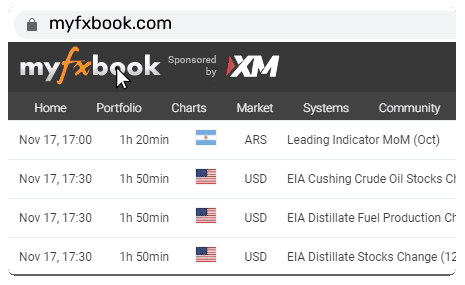Global Markets Rebalance as Israel-Iran Ceasefire Triggers Risk Rally | 24th June, 2025

US Dollar Dips
On June 24, 2025, the surprise ceasefire between Israel and Iran reshapes global market sentiment, triggering a broad risk rally. Silver (XAG/USD) stabilizes around $36.00 after rebounding from recent pullbacks, supported by reduced safe-haven flows and a softer US dollar. The Australian Dollar (AUD/USD) extends gains to 0.6825, benefiting from improved risk appetite and firmer commodity demand. The Japanese Yen (USD/JPY) strengthens sharply, driving the pair below 145.60 as dollar weakness accelerates. The US Dollar Index (DXY) slips under 98.50 amid lower demand for defensive assets. Meanwhile, crude oil (WTI) tumbles to $65.00 as geopolitical risk premiums unwind. Market attention now turns to upcoming US Consumer Confidence data, Chinese economic signals, and Fed policy commentary.
Silver Price Forecast (XAG/USD)
Current Price and Context
Silver (XAG/USD) is trading near $36.00, showing resilience after rebounding from recent lows around $35.20. The metal stabilizes as market risk sentiment improves, underpinned by a ceasefire agreement in the Middle East and modest USD weakness.
Key Drivers
Geopolitical Risks: The announcement of an Israel-Iran ceasefire has eased tensions, reducing safe-haven demand but supporting broader market sentiment.
US Economic Data: Recent softer US data has weighed on the dollar, offering indirect support to silver prices through improved relative value.
FOMC Outcome: Despite the Fed’s cautious tone and reluctance to rush into further cuts, expectations for policy easing in H2 2025 continue to support precious metals.
Trade Policy: With geopolitical trade risks subsiding, focus shifts back to industrial recovery which is moderately supportive of silver’s dual role.
Monetary Policy: Expectations of lower US rates amid easing inflation support non-yielding assets like silver.
Technical Outlook
Trend: Neutral to bullish as silver consolidates above key moving averages.
Resistance: $36.40, then $36.75 and $37.30.
Support: $35.50, followed by $35.00 and $34.50.
Forecast: Silver may continue to consolidate between $35.50 and $36.75, with a break above $36.75 potentially targeting the $37.30 high.
Sentiment and Catalysts
Market Sentiment: Sentiment is cautiously optimistic, as silver benefits from a weakening USD and the temporary resolution of geopolitical tensions.
Catalysts: US CB US Consumer Confidence, Middle East developments, industrial metal demand data, and Fed commentary.
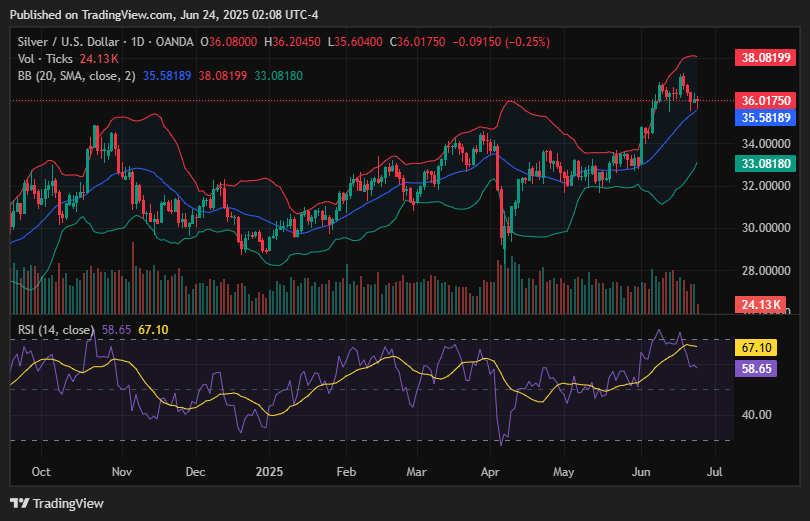
(AUD/USD) Forecast
Current Price and Context
AUD/USD trades near 0.6825, extending its recent rebound as the market embraces risk assets following news of a ceasefire between Israel and Iran. The Australian Dollar finds support in higher commodity prices and a broadly weaker USD.
Key Drivers
Geopolitical Risks: The Middle East ceasefire reduces global tensions, fueling demand for higher-yielding currencies like the Aussie.
US Economic Data: Weaker-than-expected U.S. data has dampened USD strength, giving a relative boost to the AUD.
FOMC Outcome: The Fed remains cautious but acknowledges softening inflation—this opens the door for easing, reducing USD pressure.
Trade Policy: With geopolitical risks stabilizing, attention turns to China’s stimulus efforts which may support Australian exports.
Monetary Policy: RBA is seen holding rates steady but maintaining a watchful stance; the narrowing policy divergence with the Fed supports AUD.
Technical Outlook
Trend: Bullish recovery; momentum favors upside continuation.
Resistance: 0.6845, then 0.6880 and 0.6920.
Support: 0.6790, then 0.6750 and 0.6700.
Forecast: A confirmed break above 0.6845 could push AUD/USD toward the 0.6880 zone. A risk-off shift may cap gains near 0.6750.
Sentiment and Catalysts
Market Sentiment: Positive, with risk assets recovering globally. AUD benefits from easing geopolitical fears and commodity resilience.
Catalysts: China PMI data, Fed speakers, Australian CPI later this week, and any shifts in global risk sentiment.
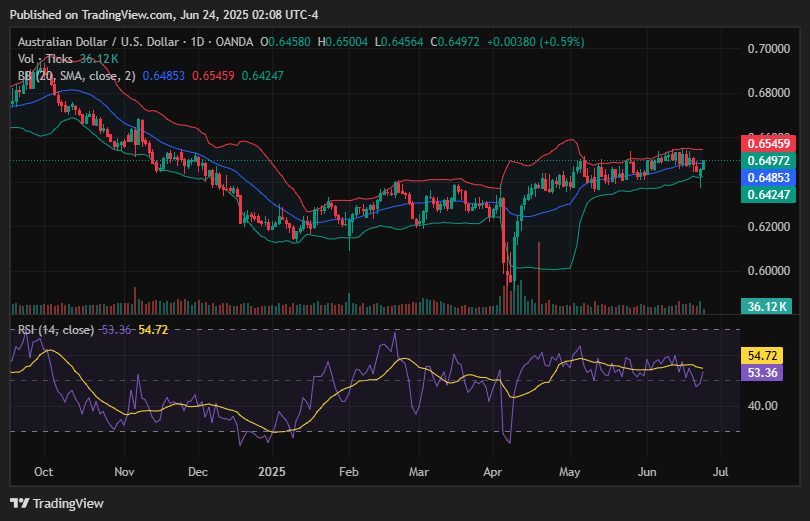
(USD/JPY) Forecast
Current Price and Context
USD/JPY trades near 145.60, its lowest level in over a month, as the Japanese Yen strengthens sharply amid broad USD weakness and safe-haven repositioning following a Middle East ceasefire.
Key Drivers
Geopolitical Risks: The Israel-Iran ceasefire boosted risk appetite, but some investors rotated back into the yen as a traditional safe-haven in light of potential residual risks.
US Economic Data: Recent weak US indicators prompted a fresh wave of dollar selling, helping JPY recover lost ground.
FOMC Outcome: The Fed’s data-dependent tone and signs of moderating inflation have limited the appeal of the USD, aiding yen strength.
Trade Policy: Ceasefire announcements eased tariff fears, pushing traders into lower-yielding currencies such as JPY amid cautious optimism.
Monetary Policy: BoJ remains dovish, but widening US-JP rate divergence may pause if Fed easing starts, helping stabilize the yen.
Technical Outlook
Trend: Bearish short-term reversal; steep decline from 147.40.
Resistance: 146.30, then 147.00 and 147.40.
Support: 145.20, then 144.75 and 144.00.
Forecast: A break below 145.20 may open the door toward 144.00; recovery above 146.30 needed to stabilize the pair.
Sentiment and Catalysts
Market Sentiment: Bearish for USD/JPY as traders unwind long USD positions and reassess carry trade risks.
Catalysts: Japanese CPI data, Fed commentary, and further geopolitical updates.
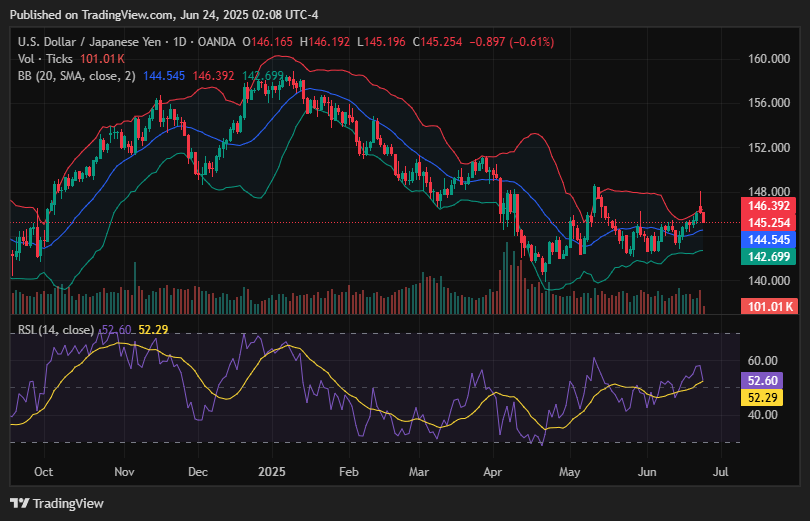
US Dollar Forecast
Current Price and Context
The US Dollar Index (DXY) dips below 98.50, retreating from recent highs as risk sentiment improves across global markets. The ceasefire between Israel and Iran triggered a shift from safe-haven USD to higher-yielding and risk-sensitive assets.
Key Drivers
Geopolitical Risks: The Israel-Iran ceasefire reduced geopolitical tensions, prompting traders to rotate out of the USD and into equities and risk currencies.
US Economic Data: Recent soft figures, including weaker retail sales and slowing inflation, have undermined USD strength.
FOMC Outcome: The Fed maintained a cautious outlook but gave no strong signal for additional tightening, softening the dollar’s rate advantage.
Trade Policy: Reduced fears of trade escalation due to geopolitical de-escalation ease demand for USD as a hedge.
Monetary Policy: With rate cuts still projected in late 2025, markets anticipate less upside for the dollar from policy differentials.
Technical Outlook
Trend: Bearish as DXY breaks below 99.00 and heads toward multi-month lows.
Resistance: 98.75, then 99.00 and 99.35.
Support: 98.30, then 98.00 and 97.50.
Forecast: The index may continue sliding toward 98.00 unless data surprises support a rebound. Sustained risk-on flows could keep DXY pressured.
Sentiment and Catalysts
Market Sentiment: Bearish; improved global risk sentiment drives flows away from USD into risk and commodity-linked currencies.
Catalysts: US Consumer Confidence, Fed remarks, equity trends, and global geopolitical news
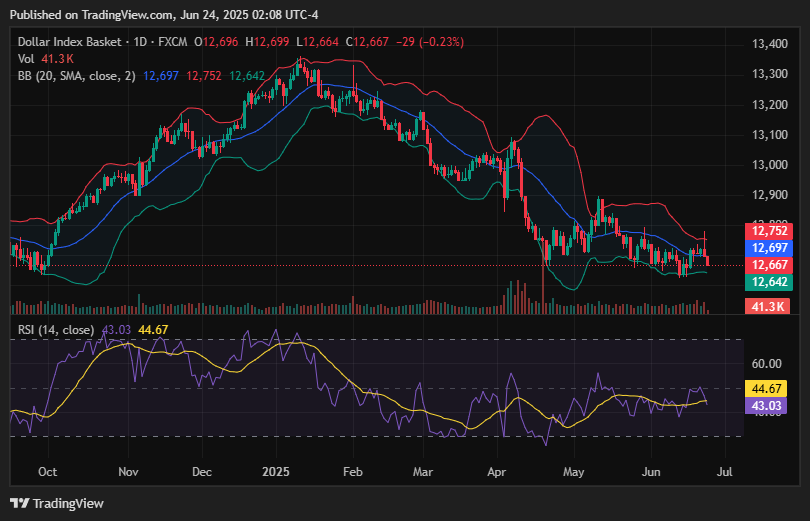
Crude Oil Forecast
Current Price and Context
West Texas Intermediate (WTI) crude oil trades near $65.00, sharply lower from recent highs above $68.50. The decline follows the surprise announcement of a ceasefire between Israel and Iran, which reduced geopolitical risk premiums built into oil prices.
Key Drivers
Geopolitical Risks: De-escalation in the Middle East slashes the geopolitical premium in crude oil, pressuring WTI lower as supply disruption fears ease.
US Economic Data: Sluggish demand indicators from the U.S., including weak industrial activity, reinforce downside pressure on oil prices.
FOMC Outcome: The Fed’s steady policy stance and cooling inflation outlook temper energy demand expectations.
Trade Policy: With geopolitical tensions easing, markets shift attention to potential U.S.-China trade moves impacting global growth and energy demand.
Monetary Policy: A less aggressive Fed could support demand in the long term, but near-term crude is weighed down by a supply/demand imbalance and risk repricing.
Technical Outlook
Trend: Bearish short-term breakdown after failing to hold above $67.50.
Resistance: 1$66.20, then $67.50 and $68.90.
Support: $65.00, then $64.20 and $62.80.
Forecast: WTI may test deeper lows if $65.00 fails to hold. A bounce back to $67.50 is possible if market sentiment stabilizes or if new supply risks emerge.
Sentiment and Catalysts
Market Sentiment: Bearish as oil traders unwind war-risk hedges. Posts show a sharp shift toward caution as physical market tightness is reassessed.
Catalysts: US Crude Oil Inventory data, global demand trends, OPEC+ statements, and Middle East developments.

Wrap-upAs June 24 unfolds, global markets pivot away from safety trades amid the Israel-Iran ceasefire. Commodities like silver remain supported, while WTI crude drops sharply on reduced war-risk premiums. The US Dollar weakens across the board, allowing risk-linked currencies like the AUD to rally. The Japanese Yen regains strength as traders reassess carry trades. With major central banks maintaining cautious tones, upcoming economic data and geopolitical developments will be critical in shaping short-term market direction.
Ready to trade global markets with confidence? Join Moneta Markets today and unlock 1000+ instruments, ultra-fast execution, ECN spreads from 0.0 pips, and more! Start now with Moneta Markets!





















